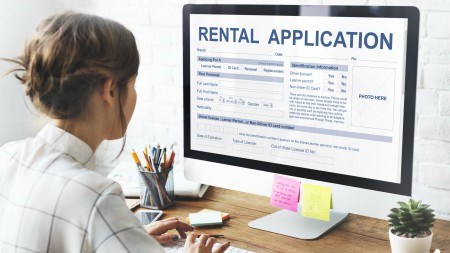Squabbles over security deposits account for a very large proportion of the disputes between landlords and their tenants – but could actually be quite easily avoided in most cases, says Chas Everitt national rentals manager Tobie Fourie.
“The deposit is supposed to protect the landlord against loss of rent if the tenant decides to do a ‘moonlight run’, and against any damage a tenant may do to the property,” he notes.
“On the other hand, if you’re a tenant who has always paid the rent on time and has kept the property clean and in good condition, you should be able to count on getting your deposit back at the end of the lease. And, of course, you should not be penalised for any damage done by a previous tenant.
“Unfortunately, though, this is not always the case – and the answer is for both parties to pay more careful attention to the condition of the property and the terms of the agreement before the lease is signed.”
Make a detailed snag list
As a start, Fourie says, a very detailed list of any existing damage and defects in the house or flat should be drawn up, using precise wording to describe any exceptions to “clean and undamaged”. A photographic record is even better, and easy to create these days with a smartphone camera. Areas for particularly close attention should include:
• Door locks - Do they turn easily, have they been replaced since the last tenant left and are the keys there?
• Walls - Are they marked, scratched or cracked? Is the paintwork good?
• Ceilings - Are there any signs of a leaking roof or geyser?
• Plumbing - Are taps or pipes leaking (check under the kitchen sink) and are the drains clear?
• Wall and floor tiles - Are they all firmly in place and undamaged?
• Carpets - Are they torn, frayed, burned or stained?
• Windows – Do they close properly? Are there any broken or cracked panes?
If all these details are carefully noted and the list then signed by the tenant and the landlord (or his agent) and attached to the lease, there should be little cause for misunderstandings on this issue later.
Read the lease
Secondly, Fourie says, tenants must take the time to read their leases carefully so they know how much notice they have to give before they leave, and how far in advance. They should also get written acknowledgement from their landlord that their notice was received, and set up an appointment for an “exit inspection”.
Return the property to its original condition
“Next, they should spend some time making sure the property looks the way it did when they took occupation – or better. Patch any holes made for picture hooks, paint the walls back to the original colour (unless the landlord likes your new colours), and give the place a really good clean before the exit inspection, and preferably after you’ve moved all your belongings out.
“Remember, the landlord can’t keep any of your deposit to repair general wear and tear, especially if you have been a tenant for a long time. But he can use it - or at least part of it - to cover the replacement or repair of anything you damaged during your tenancy, like a broken door or window, or a carpet or kitchen counter with cigarette burns.”
Revisit the snag list
Most disputes arise at this point, he says, when landlords and tenants disagree about when certain damage was done. “This is when it becomes very important as a tenant to be able to refer to the descriptions and photos obtained during your initial inspection of the property and prove exactly what it looked like before you moved in.”
Fourie says it is also vital to take notes and photos when you move out – especially if the landlord is not available for an exit inspection. “If that is the case, you should take pictures of all the surfaces in every room, and if possible video everything like lights and taps in working order, date stamp them and then deliver them to your landlord or his agent as soon as possible, with a forwarding address and your bank details for repayment of the deposit.
“This will ensure that you can’t be blamed when the landlord’s renovation goes wrong the week after you move out – and makes it much more likely that you will get all or at least most of your security deposit back.”




